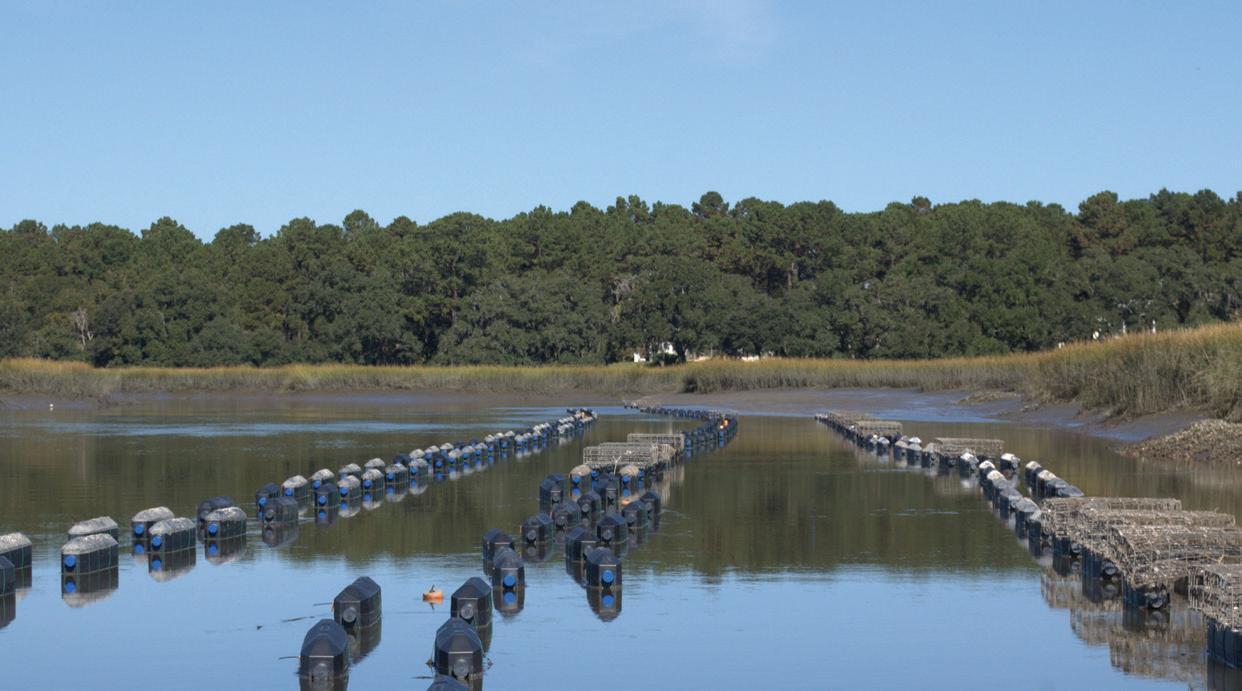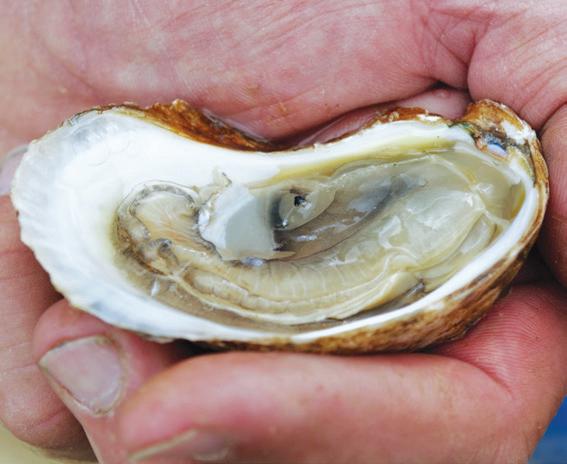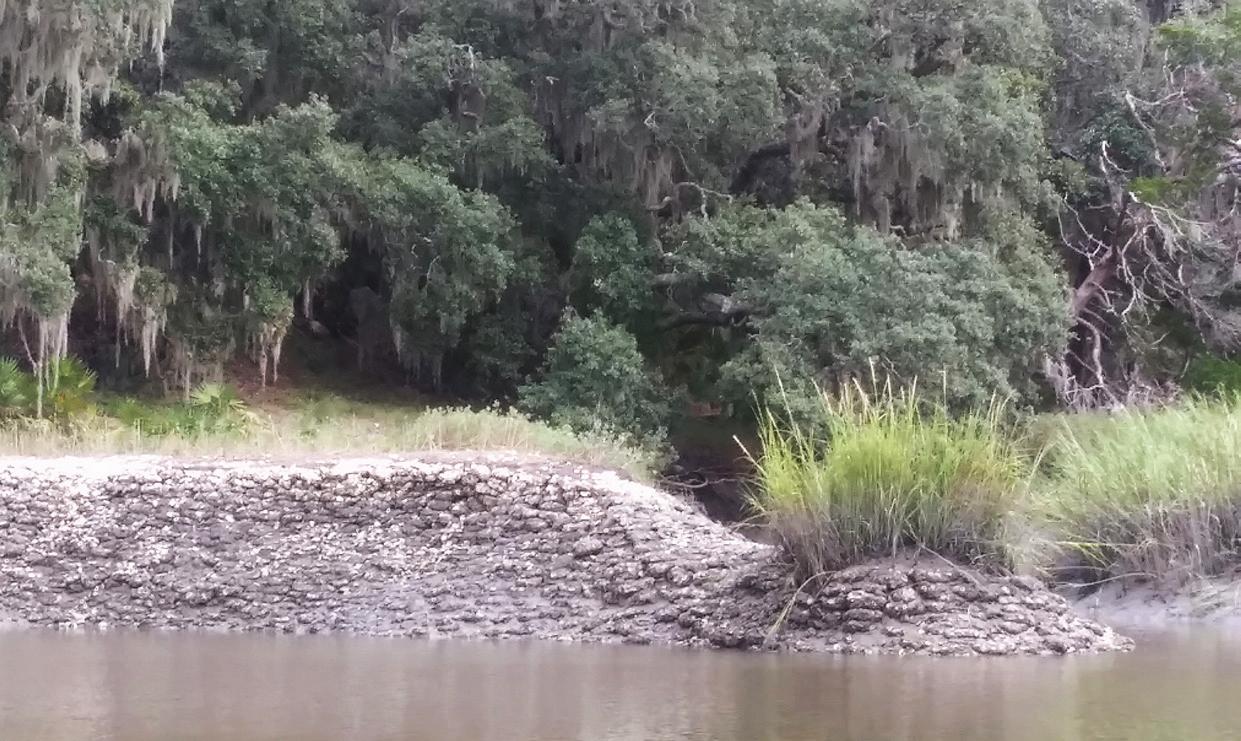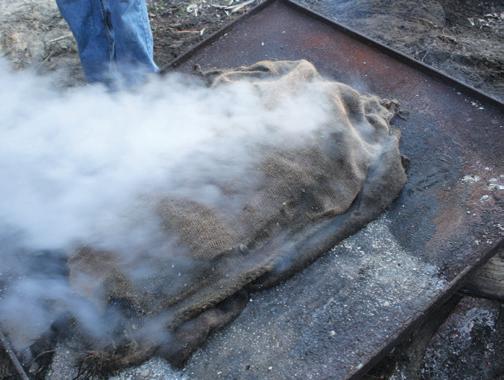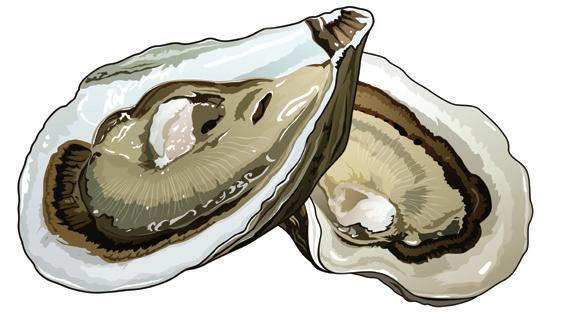The BitterEnd The World is Your Oyster! By Captain J. Gary "Gator" Hill
T
he world is your oyster. Although many of you have likely heard this phrase, even fewer may know its origins, or even the connotation behind it. This line was spoken by Falstaff (I always thought that was just a beer!), in The Merry Wives of Windsor, written by The Bard, William Shakespeare. I hope you’ll allow me to wax poetic on this delectable morsel, given oysters are the focus on this issue. As always, this will be a rambling mess that leads nowhere, so here goes. First, I’ve always wondered who was the first person to open an oyster, look at the inhabitant and say, “Mmm! That looks yummy!” For many, just the sight of a raw oyster is a no-go, let alone the consistency, or the way it feels sliding down your throat when eaten raw on the half shell. I am not one of those, thankfully. I love oysters most anyway you set them in front of me, from raw with a splash of hot sauce, to fried. Here in coastal Georgia and South Carolina fall means many things, most especially football and oyster roasts. An oyster roast in the lowcountry is synonymous with family and friends, and sometimes even fundraisers. However, it seems early First Nations peoples were doing oyster fests, long before Europeans ever showed up. Oyster middens found on many of the barrier islands stand as a testimony to the role this tasty bivalve has played, going back centuries, from nutritional sustenance, to the shells being used in construction and for roadbeds. From Fort Frederica to Daufuskie and beyond, I have encountered tabby construction in everything from homes to walled barriers. Thomas Spalding, the builder of Chocolate Plantation on Sapelo Island was a staunch advocate of tabby construction. Spalding wrote that equal measures of three key ingredients was all that was needed to create this durable material. Shells, lime and sand, by volume and not by weight; he goes on to say that 10 bushels of each of these mixed with water will provide about sixteen cubic feet of tabby material. Walls typically ranged from about 14 to 16 inches thick at ground level, could be over two feet thick for anything below ground level, and about 10 inches for second floor walls. Seldom would tabby walls be higher than two storys. One excellent example of tabby construction methods is at the Wormsloe Plantation Museum, as well as the tabby remains of the Nobel Jones house. As mentioned earlier, coastal Native Americans have been harvesting oysters well in excess of three to five thousand years. In the Greek and Roman times oysters were considered a delicacy. From Neolithic man to the present this mollusk has
An example of early tabby construction, on Ossabaw Island. Photo by Amy Thurman
found its way not only onto the dinner table and buildings, but the shells were used as implements such as spoons and knives. There are so many rabbit holes we could go down in talking about the uses of the oyster! Building on the remains of your ancestors is the motto of the coastal Georgia and South Carolina oyster, and in particular the cluster oysters which, as the name implies, attach to other oyster shells, creating clusters, which in turn make up oyster beds or rakes. Unlike singles these require a bit more work to extract the delicious morsels. Which brings us full circle from my opening sentence, the world is your oyster. One might interpret this to mean you get out of it, that which you put into it. You can struggle to open an oyster shell and be content with the reward of just the meat to sustain you, or you can open many shells in search of that ever elusive pearl, that will elevate you. Maybe I’ll see you at an oyster roast soon! In the meantime, peace and love, shrimp and grits … I'll see you on the water.!
Email: TheOriginalCaptainGator@gmail.com
22
Southern Tides Magazine
October 2020

